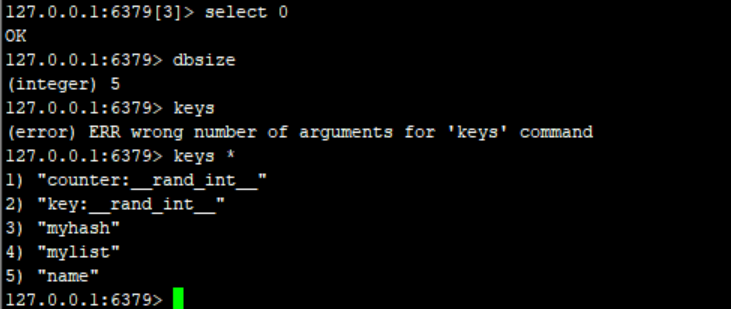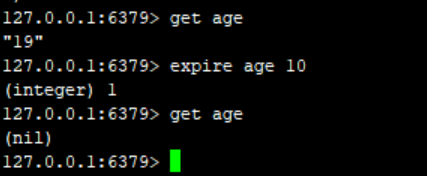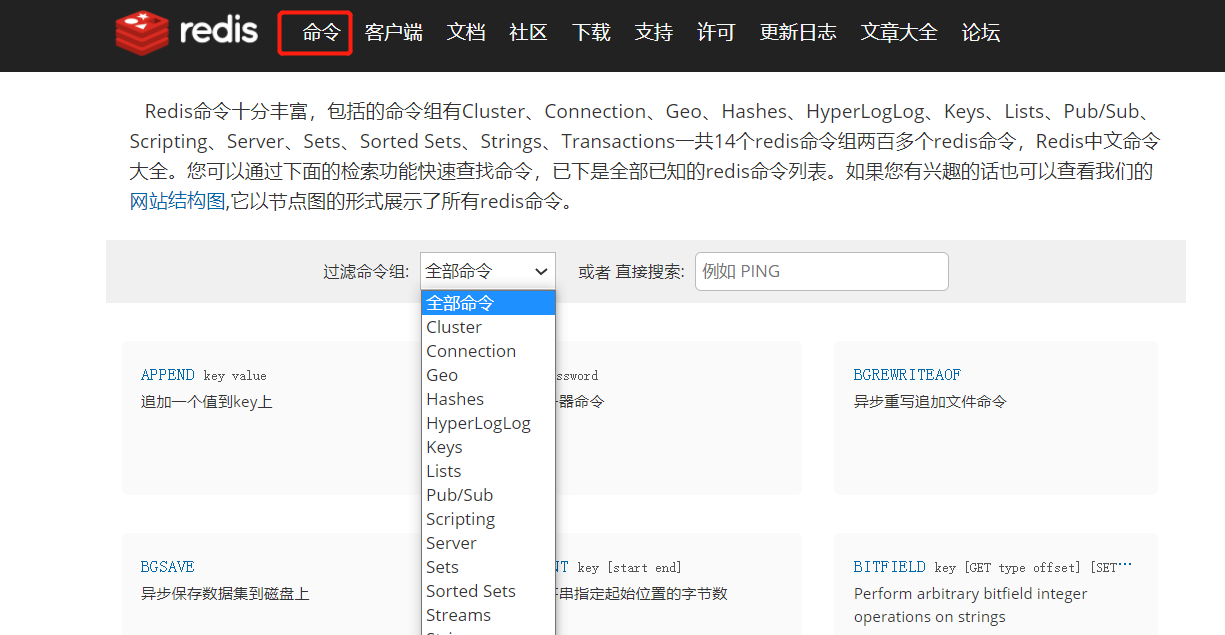Example analysis of common operation commands for getting started with Redis
Redis Basics
As an open source (BSD licensed) in-memory data structure storage system, Redis can be used as a database, cache and message middleware. It supports many types of data structures, such as strings, hashes, lists, sets, sorted sets and range queries, bitmaps, hyperloglogs and geospatial ( geospatial) index radius query.
Redis has built-in replication, LUA scripting, LRU eviction, transactions and different levels of disk persistence, and through Redis Sentinel ) and automatic partitioning (Cluster) provide high availability.
1. Redis is single-threaded
Redis is based on memory operation. CPU is not the performance bottleneck of redis. Its bottleneck depends on the machine’s memory and network bandwidth, so single-threading can be used. To implement it, just use a single thread.
So why is it so fast with a single thread?
First of all, there are two misunderstandings that need to be clarified:
High-performance servers are not necessarily multi-threaded.
Multi-threading is not necessarily more efficient than single-threading.
Redis puts all the data into the memory. If there are multiple threads, there will be CPU switching context, which increases the time consumption. For the memory system, there is no context switching. Single-threaded operation efficiency is the highest.
2. Common operations on databases
1. Default database
Redis has 16 databases by default, and the default use is the first database (subscript 0). You can check the configuration file, which contains database 16.

2. Switch database
select 3 to switch to the fourth database.

#3. Check the database size
dbsizeYou can check the current database size.

At this time, set a value in the database and check the database size again, and it will change.

4. Clear the database
Clear the current database
flushdb
Clear all databases
flushall
3. About Common operations of Redis-Key
1. set set key and value
set name pingguo222
2. keys * View all keys
You can view all keys. Switch back to the default database here and view all keys.
keys *

3. get the value of key
get name

4. exists key Whether key exists
exists name
If it exists, it returns 1, if it does not exist, it returns 0.

5. move move key
The MOVE command moves the key of the current database to the given database db.
move name 0
For example, assuming you are currently in database 3, you want to execute a command to move the content named "name" to database 0. Returns 1 if successful, 0 if failed.

6. Set the key expiration time
I set the age to expire after 10s. If I get it again after 10s, I will not get the value.
expire age 10

7. Check the remaining time of the key
I set the name expiration time to 100s and use ttl to check it.
ttl name

8. Check the key type
type name

There are actually many commands, and the redis official website provides query commands If you don't know what's going on later, just check it out.

The above is the detailed content of Example analysis of common operation commands for getting started with Redis. For more information, please follow other related articles on the PHP Chinese website!

Hot AI Tools

Undresser.AI Undress
AI-powered app for creating realistic nude photos

AI Clothes Remover
Online AI tool for removing clothes from photos.

Undress AI Tool
Undress images for free

Clothoff.io
AI clothes remover

AI Hentai Generator
Generate AI Hentai for free.

Hot Article

Hot Tools

Notepad++7.3.1
Easy-to-use and free code editor

SublimeText3 Chinese version
Chinese version, very easy to use

Zend Studio 13.0.1
Powerful PHP integrated development environment

Dreamweaver CS6
Visual web development tools

SublimeText3 Mac version
God-level code editing software (SublimeText3)

Hot Topics
 1377
1377
 52
52
 How to build the redis cluster mode
Apr 10, 2025 pm 10:15 PM
How to build the redis cluster mode
Apr 10, 2025 pm 10:15 PM
Redis cluster mode deploys Redis instances to multiple servers through sharding, improving scalability and availability. The construction steps are as follows: Create odd Redis instances with different ports; Create 3 sentinel instances, monitor Redis instances and failover; configure sentinel configuration files, add monitoring Redis instance information and failover settings; configure Redis instance configuration files, enable cluster mode and specify the cluster information file path; create nodes.conf file, containing information of each Redis instance; start the cluster, execute the create command to create a cluster and specify the number of replicas; log in to the cluster to execute the CLUSTER INFO command to verify the cluster status; make
 How to implement the underlying redis
Apr 10, 2025 pm 07:21 PM
How to implement the underlying redis
Apr 10, 2025 pm 07:21 PM
Redis uses hash tables to store data and supports data structures such as strings, lists, hash tables, collections and ordered collections. Redis persists data through snapshots (RDB) and append write-only (AOF) mechanisms. Redis uses master-slave replication to improve data availability. Redis uses a single-threaded event loop to handle connections and commands to ensure data atomicity and consistency. Redis sets the expiration time for the key and uses the lazy delete mechanism to delete the expiration key.
 What to do if redis-server can't be found
Apr 10, 2025 pm 06:54 PM
What to do if redis-server can't be found
Apr 10, 2025 pm 06:54 PM
Steps to solve the problem that redis-server cannot find: Check the installation to make sure Redis is installed correctly; set the environment variables REDIS_HOST and REDIS_PORT; start the Redis server redis-server; check whether the server is running redis-cli ping.
 How to view all keys in redis
Apr 10, 2025 pm 07:15 PM
How to view all keys in redis
Apr 10, 2025 pm 07:15 PM
To view all keys in Redis, there are three ways: use the KEYS command to return all keys that match the specified pattern; use the SCAN command to iterate over the keys and return a set of keys; use the INFO command to get the total number of keys.
 How to read the source code of redis
Apr 10, 2025 pm 08:27 PM
How to read the source code of redis
Apr 10, 2025 pm 08:27 PM
The best way to understand Redis source code is to go step by step: get familiar with the basics of Redis. Select a specific module or function as the starting point. Start with the entry point of the module or function and view the code line by line. View the code through the function call chain. Be familiar with the underlying data structures used by Redis. Identify the algorithm used by Redis.
 How to use the redis command
Apr 10, 2025 pm 08:45 PM
How to use the redis command
Apr 10, 2025 pm 08:45 PM
Using the Redis directive requires the following steps: Open the Redis client. Enter the command (verb key value). Provides the required parameters (varies from instruction to instruction). Press Enter to execute the command. Redis returns a response indicating the result of the operation (usually OK or -ERR).
 How to read redis queue
Apr 10, 2025 pm 10:12 PM
How to read redis queue
Apr 10, 2025 pm 10:12 PM
To read a queue from Redis, you need to get the queue name, read the elements using the LPOP command, and process the empty queue. The specific steps are as follows: Get the queue name: name it with the prefix of "queue:" such as "queue:my-queue". Use the LPOP command: Eject the element from the head of the queue and return its value, such as LPOP queue:my-queue. Processing empty queues: If the queue is empty, LPOP returns nil, and you can check whether the queue exists before reading the element.
 How to use redis lock
Apr 10, 2025 pm 08:39 PM
How to use redis lock
Apr 10, 2025 pm 08:39 PM
Using Redis to lock operations requires obtaining the lock through the SETNX command, and then using the EXPIRE command to set the expiration time. The specific steps are: (1) Use the SETNX command to try to set a key-value pair; (2) Use the EXPIRE command to set the expiration time for the lock; (3) Use the DEL command to delete the lock when the lock is no longer needed.




